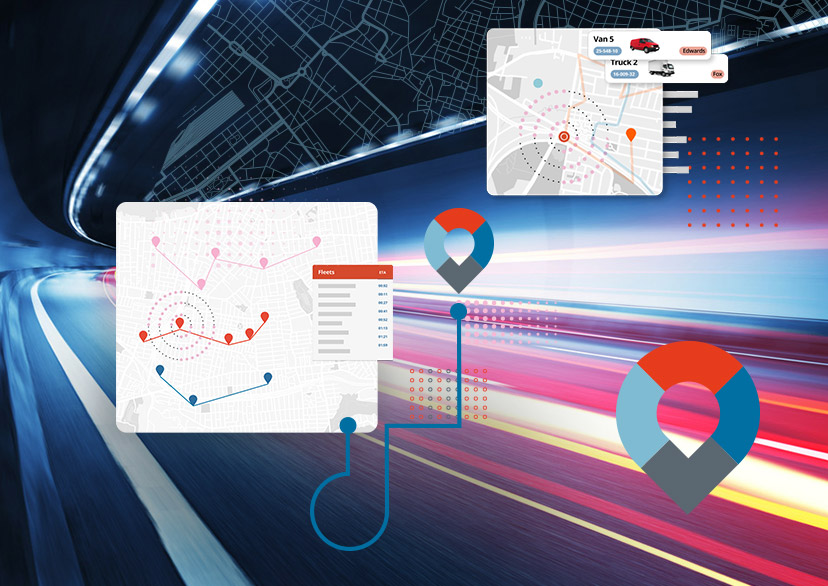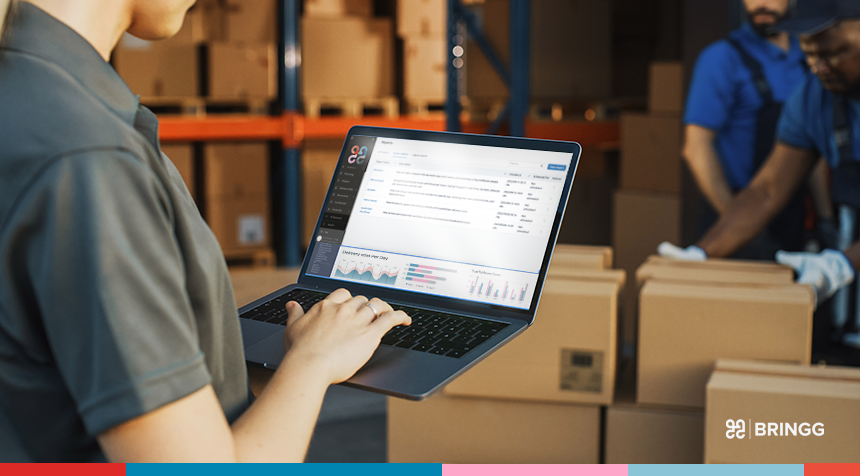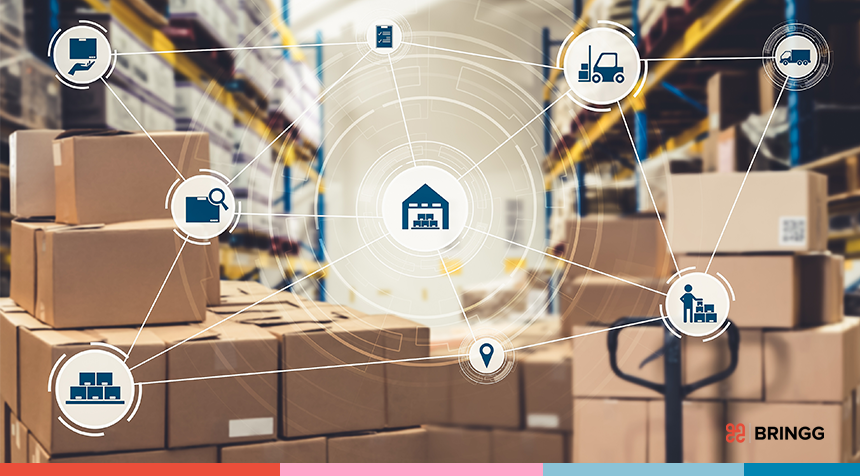With unprecedented order volumes and demand for fast delivery at scale, businesses traditionally offering scheduled, multi-day delivery are looking to scale up their delivery speed and capacity – all with an eye to expenses. Balancing operational expenses with increased volumes, and less time in which to deliver, starts with good delivery planning: understanding the best way to use inventory, fleets, drivers, and technology systems for optimal performance. This is why retailers and logistics service providers today are in a race for better route optimization software.
Smarter, digitized route optimization can not only ensure an efficient route every time, but also provide the flexibility you need to grow your business.
This post explores the different elements of route optimization, and which technology you need in order to deliver more orders, in less time, at scale.
What is route optimization, and why you need it
Delivery route optimization takes route planning to the next level by maximizing the number of deliveries along a route in the shortest amount of time possible. By optimizing routes, shippers can increase the number of deliveries done per day, a critical capability in today’s eCommerce environment.
Traditionally, a dispatcher or manager plans the routes drivers will take for scheduled deliveries in order to deliver as many orders as possible, in as short a time as possible. As order volumes and drivers increase, the logistics become more complex. This becomes even more complicated when on demand (same day or next day) delivery is taken into consideration.
Whether in the form of a route planner app or as part of a larger logistics solution, automated route optimization is the digital answer to manual route planning and a standard requirement today for engineering faster and better routes.
Why you need automated, real-time route optimization software:
- Improve shipper and customer satisfaction by providing accurate quotes at online checkout
- Reduce cost to deliver – both by reducing fuel costs and increasing drop density
- scale up delivery operations cost effectively using your existing drivers and fleet
The right route optimization software can significantly boost drop density and reduce the cost to deliver.
Route optimization: providing reliable delivery quotes
When consumers shop on a retail site and go to checkout, they’re usually presented with only a few delivery options: next-day, 5 day, etc. Whether or not orders can be sent earlier depends on many factors, including order availability and driver availability.
Route Optimization Software should take the following variables into consideration:
- Business rules which may be unique to your business – as compared to preset variables
- Fleet Variables
- Driver Variables
- Customer Variables
- Order Variables
Real time delivery quotes at Bringg
Upon checkout, customers are presented with scheduling slots. These slots can either be based on real-time available capacity or they can just consider cut-off times and not real capacity
If scheduling is based on real-time capacity, slots that can be inserted into the existing delivery scheduling are presented. This is done via route optimization by crunching together data related to the driver and fleet capacity with data related to the specific order and customer and achieving optimal slots.
Learn more about the Last Mile Experience with Bringg >>
However, not all route optimization solutions are equal. Moreover, every business has different logic and operational requirements, and not every route optimization solution will take those requirements into consideration, or provide the flexibility your business requires.

Routing constraints
An intelligent routing engine is one that can be configured in multiple ways, to meet multiple delivery models, including on demand and scheduled delivery.
What to look for:
- Software that can run optimization several times a day, or several times an hour, making it ideal for supporting multiple commercial and operational needs.
- A routing engine that determines which orders go together in the same run, then plans the route based on these priorities as well as your operational constraints.
There are hundreds of different hard and soft constraints that can be taken into consideration. When looking at route optimization tools, it’s important to check whether there are a set list of constraints, how flexible this list is, and how the constraints are prioritized against one another.
The best route optimization software will not only include multiple variables, but give business the choice of how much weight to give each variable during optimization.
Hard vs. soft constraints
A hard constraint is a question with a clear yes/no answer, one that the routing engine treats as a mandate before deciding on how to route the order. For example, if trucks past a certain weight are not allowed on a bridge, they will be routed through another road. If a grocery order can’t be left in the vehicle for more than an hour, then the order will be delivered on a route within that time frame – or moved to another driver, and another run, where the hard constraint can be met. This helps grocers support the cold chain, but it is also relevant for delivering anything whose quality is affected by time spent in transit.
A soft constraint is one which a routing engine treats as a preference, and tries to apply whenever possible. It’s often the soft constraints which separate the ‘acceptable’ route from the optimal route. Businesses can set soft constraints around parameters like fleet, time and cost considerations, such as preferring to deliver with fleet X (the less expensive fleet, or the one with the best rating) over fleet Y, whenever possible.
- Hard Constraints – strict requirements
- Soft Constraints – preference
- Custom parameters – variables that the business adds for consideration
Soft and hard constraints are typically combined to determine the optimal route. For example, when an order cannot be delivered within the requested delivery time window because the refrigerated truck does not have the capacity (hard constraint), the business may choose to deliver it as close as possible to the requested time window (soft constraint).
Customer parameters – Many businesses want to plan routes based on customized parameters that most route optimization software does not include. For this reason, until recently, many large enterprises attempted to create automated route optimization in house. Today, there are platforms which support the ability to add custom parameters which the routing engine can take into consideration when routing orders. For example, a business may want to take the customer’s lifetime value into consideration.
Variables and business Rules for route optimization to consider can include:
- Driver Variables – The number of drivers, maximum time on the road, maximum distance from the starting point, driver working hours (including regulatory restrictions); driver break times; driver skills (for example, assembly or installation)
- Data received from the OMS/CRM/Scheduling system – This can include availability and priority
- Order Variables – Prep, staging or loading time; the package size; hot, cold, or fragile storage; requires a specific certification; requires age verification – for example, selling alcohol;
- Vehicle and Road Variables – Estimated time on site; the number of vehicles; vehicle type; vehicle capacity (weight and volume); capability (e.g. the ability to lift loads); fleet runs (on a recurring route); cost
This list is broad, and not every variable here will be necessary for your operations. However, it shows the breadth and depth of variables that exist across orders, customers, vehicles, drivers and fleets that you may want your routing system to take into consideration when automatically planning routes.
Traffic patterns and road restrictions
Traditionally, a route planner app would take traffic patterns into consideration, but often this would be supplemented by experienced dispatchers and their on-the-ground knowledge of hourly, weekly and seasonal traffic behavior. Routing software can have preset traffic patterns identified, in order to automatically plan different routes based on traffic considerations.
Similarly, many route optimization solutions do not take road restrictions into consideration. These can be legal restrictions such as roads with weight limits, or paths restricted to bicycles. However, there can be individual business restrictions to traveling through a certain area – for example, traveling through a dangerous neighborhood. These variables require a great deal of customization in order to fit the demands of a specific business.
Routing and truck navigation
Large trucks used in commercial transport often face unique routing considerations. Heavy commercial trucks may not be allowed to drive on some roads and require routes designed around their weight, model or delivery volume.
A good route optimization system will take highway and route regulations as well as vehicle variables into consideration. This prevents companies from accidentally planning a route which trucks cannot travel, thereby avoiding rerouting while a truck is en route and the subsequent massive (and massively expensive) delays.
Integration with other systems
Many of the variables defined above will only be available on a delivery platform that includes, or integrates with, systems such as OMS, CRM and scheduling systems. Most route optimization systems lack these integrations and therefore cannot optimize routes based on order or customer data.
What is flexible route optimization software?
The secret to creating the optimal route at scale is flexibility. The more flexible the routing engine, the more optimal the results will be for each team’s particular needs.
What a flexible Route Optimization solution should support:
- Planned and on demand delivery models with the same resources
- Automated, manual and semi-automated routing
- Internal and external fleets, and different fleet models
Planned vs. on-demand delivery services
A strong route optimization solution should support multiple delivery models, from same-day and on-demand delivery, to routes planned days in advance. Businesses may need to include planned orders coming in from eCommerce sites alongside requests for home delivery from in-store orders. In this scenario, the in-store orders are added to the orders already planned, and the routing engine automatically recalculates the route, including that new order. This lets businesses plan routes based on what is optimal for each region or operation, and use the same resources – fleets, store staff, and inventory – to fulfill both types of deliveries.
Automatic and manual route optimization
As the above example shows, part of routing flexibility is the ability for a solution to run routing automatically, to suggest routes, or to provide dispatchers with the tools to manually plan out and optimize their routes.
Businesses can apply one or several different routing solutions per geographic area or location, such as using a dispatcher for a large supermarket, but using automatic route optimization for smaller suburban stores. Some may want to run routes three times a day with specific cutoff times, while others may be entirely manual. Other organizations may want to standardize routing, which can be easily configured.
The decision on how much automation to apply is often based on order volume or speed. The largest volumes of orders, and the ones with the fastest promised times (i.e. on demand delivery) generally require automated routing.
Businesses that want to offer on-demand delivery generally require fully automated dispatch and routing to get the orders out fast: automatically choosing the optimal driver and vehicle, from the optimal fleet, and calculating the optimal route based on your businesses priorities and promised delivery time.
Supporting manual Route Optimization – Some businesses have experienced dispatchers with an encyclopedic knowledge of routes who prefer to manage routes manually. In this case, our Route Optimization saves the dispatcher time by supporting their manual planning. Some dispatchers prefer to have the system suggest a route, and then to manually tweak the routes as desired. Others prefer to plan the entire route manually. Bringg provides the recommendations and insights to support both scenarios. For example, the dispatch dashboard’s preview map automatically recalculates ETAs, providing the insights dispatchers need to optimize their route.
Flexibility around fleets and driver models
The most advanced routing solutions today are those that support multiple routing modes within a single environment, a single team, or even with the same resources.
Pooled vs. tethered fleets – Businesses can create routes for drivers who serve a designated region, moving in between different warehouses, stores and customers, and for drivers who only pick up orders from a single place.
Internal and external fleets – When businesses work with contractors and third party fleets, the most route optimization software should be available for the use of all, allowing both internal and external dispatchers and drivers to optimize routes.
This flexibility becomes a major factor in increasing drop density. Low drop density – a big factor in delivery costs – is often caused by ‘milkman’ routes that do not take multiple business needs or delivery models into consideration. Besides prioritizing drop density as a routing constraint, the most advanced route optimization solutions can also route orders for different delivery models on the same run. This means that a driver with a dedicated route can do pickups and dropoffs on the same run, optimized to ensure the truck is filled to (and not above) maximum volume.
Creating accurate, optimal routes based on data science
Flexible, automated route planning software can help increase efficiency, reduce overhead, and help grow your business.
At Bringg, Route Optimization is an integral part of our Intelligent Dispatch and Routing solution which focuses on providing the optimal route to meet your growing requirements. Bringg’s orchestration technology provides uniquely accurate routing times based on robust data science, extensive historical data and real-time data feeds. Machine learning algorithms accurately project the timing of the entire delivery run – the time to load, time to deliver, time on site, and time back to the loading area – based on each business’s actual performance. These accurate predictions improve the suggested routes, and increase delivery capacity without expanding your resources.
Just as importantly, accurate timing predictions allows businesses to reduce or eliminate timing buffers, so they can offer customers shorter time windows. This can also be a differentiator in service plans, with premium plans offering shorter delivery windows than basic plans, and Bringg’s routing engine taking those time windows into consideration when planning routes. This accuracy extends to the middle mile, including telling staging staff exactly which staging dock to go to, in order to increase delivery speed.
Bringg’s intelligent dispatch and routing technology help you achieve the optimal fleet and driver efficiency. Our data-led delivery and fulfillment platform digitizes route planning for scheduled and on demand delivery concurrently, optimally slotting in on demand orders into your scheduled delivery plan. This intelligent solution frees up your dispatchers to handle exceptions, increases drop density and reduces the cost to deliver.
Route optimization is part of Bringg’s general approach to helping retailers and logistics providers scale up and optimize their delivery operations for rapid growth and exceptional customer experience at scale. Using data-led delivery and fulfillment orchestration technology, we enable new fulfillment and delivery models that maximize customer experience, optimize operations and scale up the business.




